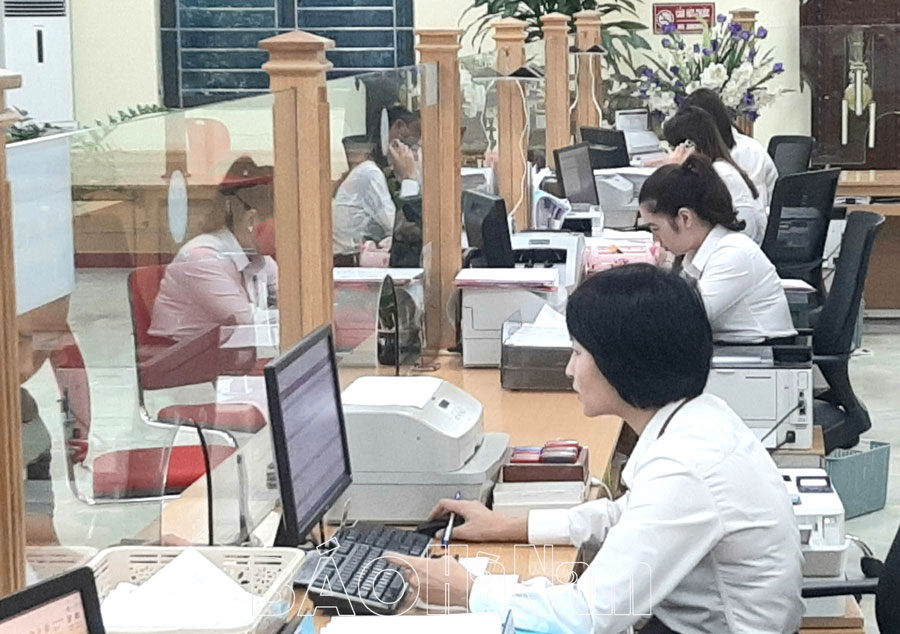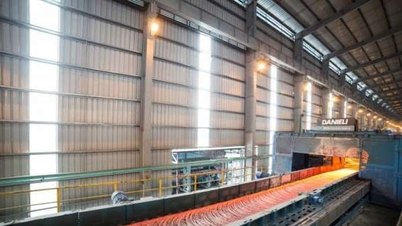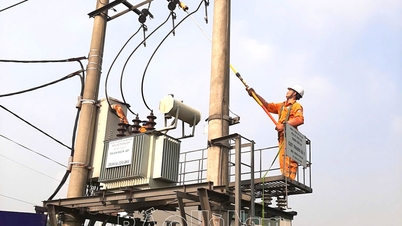According to the synthesis of the competent authorities, after the direction of the State Bank (SBV), up to now, 29 commercial banks have adjusted to reduce interest rates from 0.1 to 1.05%/year, including: Ban Viet, Hang Hai, Vietnam Thuong Tin, Saigon Cong Thuong, Quoc Te, Bao Viet, Kien Long, Bac A, Viet A, Thinh Vuong and Phat Trien (PGbank), Xuat Nhap, Loc Phat (LPBank), Nam A, Saigon Ha Noi ( SHB ), Quoc Dan (NCB), VCBNeo, BIDV and Techcombank. Currently, interest rates at the Bank for Agriculture and Rural Development of Vietnam (Agribank) fluctuate from 2.1% to 4.8%/year, depending on the term. Agribank listed the highest interest rate for a 24-month term at 4.8%/year, while the interest rate for non-term and payment deposits is at 0.2%/year. At BIDV, the mobilization interest rate for 12 to 36 months ranges from 4.7 - 4.8%/year; from 1 month to 9 months is 0.1 - 3%/year. At Viettinbank, the mobilization interest rate for 13 months to over 36 months also fluctuates from 4.7 - 4.8%/year. The mobilization interest rate level of credit institutions managed by the State Bank, Branch of Region 7 continues to remain low. The mobilization interest rate for deposits under 6 months is commonly from 2.61 - 3.34%/year; from 6 months or more is commonly from 4.35 - 5.17%/year.

According to commercial banks, although savings interest rates are not currently the most profitable investment channel, this is still a safe and reasonable choice for those with idle cash flow in the context of many economic fluctuations. When the main investment markets (real estate, stocks, gold, personal production and business, etc.) all show signs of instability, people tend to prioritize capital safety by depositing savings in banks. Specifically, with the real estate channel, in many urban areas it has increased at a high level, making many people unable to invest. With the stock channel, although the market has improved in terms of indexes, cash flow is still exploratory and cautious in investment. As for the gold and foreign currency channels, gold prices are currently at a record high, fluctuating strongly according to international factors. Meanwhile, investment in foreign currencies is still limited because many people are concerned about foreign exchange market management policies and exchange rate risks. These channels are more suitable for risk hedging than long-term profitable investment.
Many economic experts believe that the trend of stable bank interest rates will continue in the coming time and many people still consider savings deposits as a safe destination for capital flows. Although not a high-profit investment channel, saving money in banks is the optimal option to wait for the market to stabilize and more feasible investment opportunities. The reason is that banks mobilize capital at the beginning of the year with slightly increased interest rates, aiming to stimulate production development. However, the beginning of the new year is also the time when banks can adjust and increase deposit interest rates to attract capital sources. When balancing the "cash flow", commercial banks implement many effective credit growth solutions along with credit quality control; promptly restructure the repayment period for customers; reduce interest rates for customers in priority groups according to State regulations. At the same time, commercial banks also begin to reduce deposit interest rates to improve business efficiency and support customers. This also shows the flexibility of banks in ensuring capital to serve the economy.

Mr. Luong Duc Cuong, Director of Agribank Thanh Liem Branch, said: The source of mobilized savings is very diverse and rich from many different channels such as small savings among people, non-term deposits of individual business households, and enterprises. For farmers, at the beginning of the year, they have money from harvesting agricultural products, selling pigs, poultry, and gifts from children living far away... but cannot spend it, so they save it in the bank. Not only people in the first 3 months of the year, many businesses and individual business households in the first quarter have not used the capital and have deposited it in the bank without a term. This is a favorable time for banks to mobilize relatively stable capital, the savings flow is superior to the disbursed money and the mobilization interest rate level fluctuates from 4.7 - 4.8% / year for terms of 13 to more than 36 months.
According to the report of the State Bank, Branch Region 7, by the end of May 2025, capital mobilization of credit institutions in the Region is estimated at VND 518,653 billion, an increase of 8.40% compared to the end of 2024, meeting 87.19% of credit capital demand in the area. Of the total capital above, capital mobilization in Thanh Hoa province accounts for the largest proportion in the region (39.25%), followed by Nam Dinh (27.58%), Ha Nam (16.88%), Ninh Binh (16.27%).
In the last 7 months of the year, commercial banks are focusing on mobilizing capital to meet the needs of customers to invest in expanding production and business development. The customer attraction policies that commercial banks apply to serve capital mobilization include: Marketing, interest rates, service portfolio and other policies related to the relationship between banks and customers; supporting and advising customers on issues related to the financial - monetary - banking sector, more importantly, helping customers have an investment portfolio, choosing the types of banking services provided; reducing mobilization interest rates not only helps banks maintain liquidity but also supports customers to reduce lending interest rates to increase production and business in the period from now until the end of the year.
Tran Thoan
Source: https://baohanam.com.vn/kinh-te/tai-chinh-ngan-hang/alai-suat-huy-dong-tiet-kiem-co-xu-huong-giam-165181.html


































































































Comment (0)